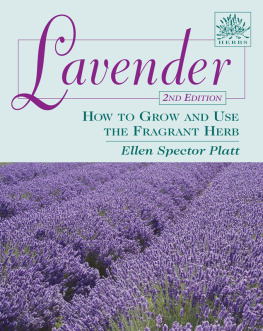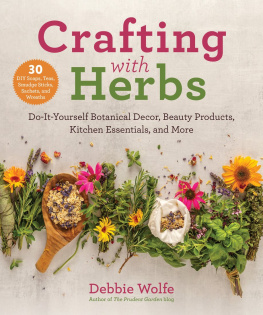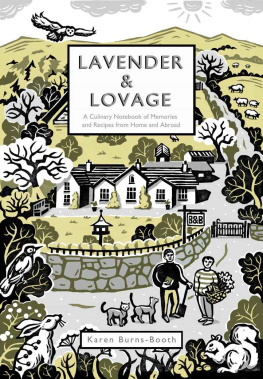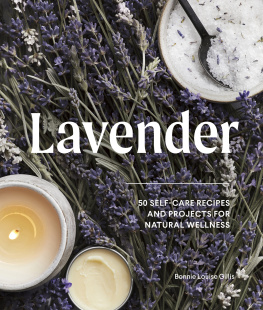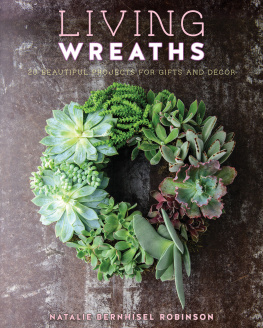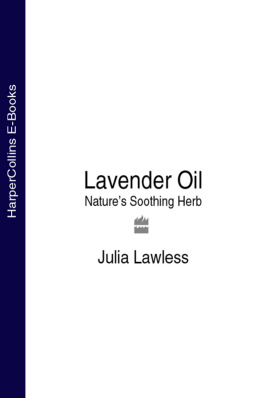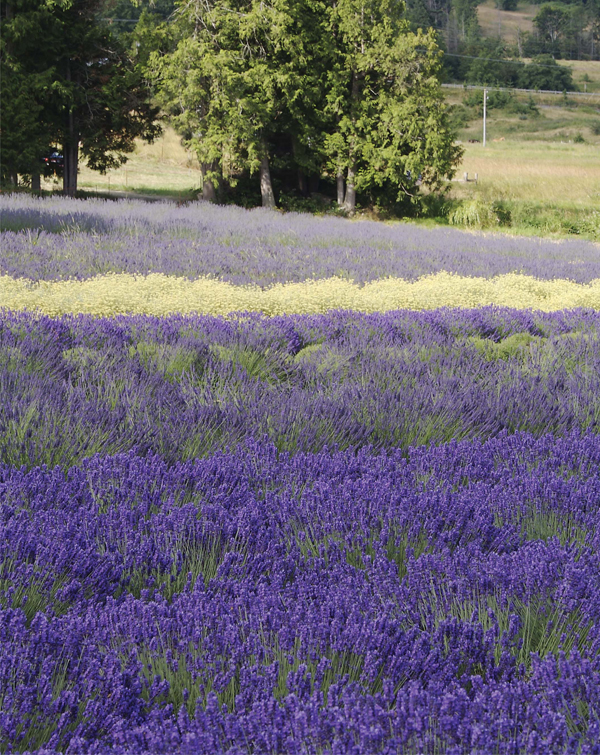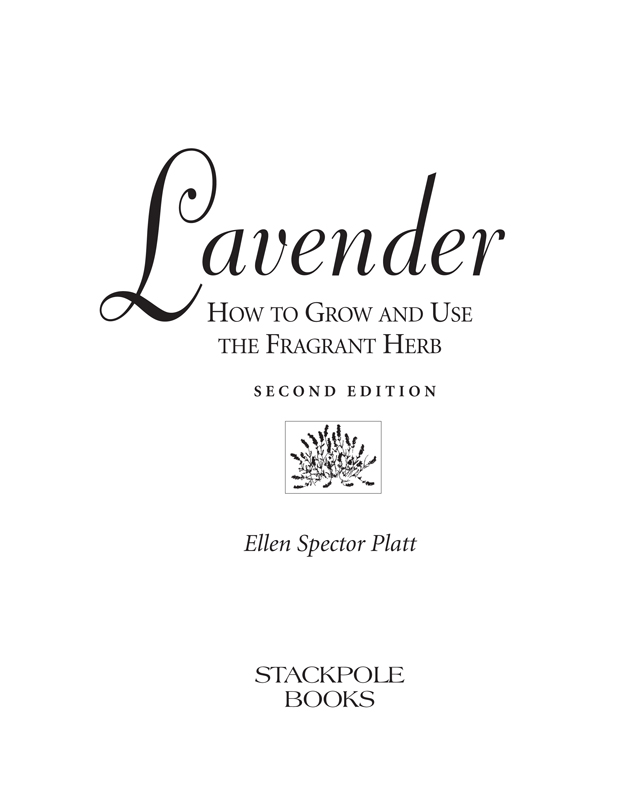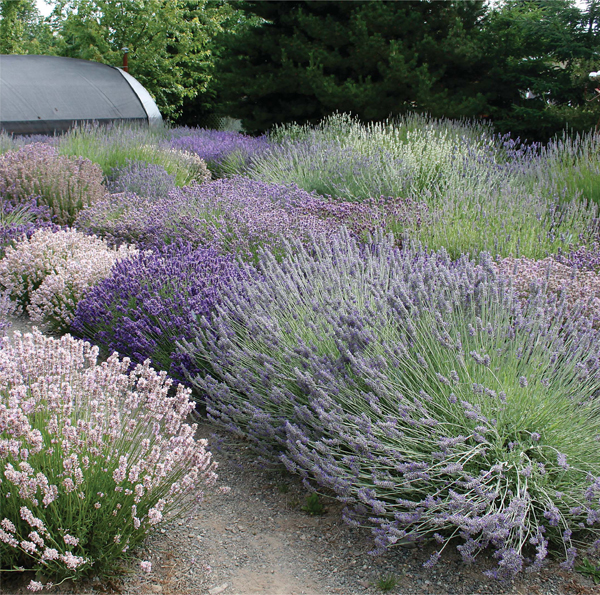E llen Spector Platta psychologist with many years in teaching, research, public mental health work, and private practiceswitched careers eighteen years ago. She became a flower and herb farmer in Schuylkill County, Pennsylvania, growing hundreds of varieties of flowers and herbs, primarily for drying and use in decorative designs. She sold her products at retail and began writing and teaching classes in growing, drying, and decorating with flowers. She currently gardens on an eighteenth-floor roof in New York City and in New Hampshire and Massachusetts with her children and grandchildren.
She is a part time instructor at the Brooklyn Botanic Garden and lectures around the country at herb and horticultural societies, lavender festivals, garden clubs, and arboreta. In 1998, she was designated one of ten Great American Gardeners by the Epcot International Flower and Garden Festival at Walt Disney World.
She has written nine books and edited two magazines, and her designs have been featured on the covers of many national magazines. Contact her through her website, www.ellenspectorplatt.com.
Ellen is shown here in the roof garden she tends for her building. B. B. PLATT
Copyright 1999, 2009 by Ellen Spector Platt
First Edition Published 1999. Second Edition 2009
Published by
STACKPOLE BOOKS
5067 Ritter Road
Mechanicsburg, PA 17055
www.stackpolebooks.com
All rights reserved, including the right to reproduce this book or portions thereof in any form or by any means, electronic or mechanical, including photocopying, recording, or by any information storage and retrieval system, without permission in writing from the publisher. All inquiries should be addressed to Stackpole Books, 5067 Ritter Road, Mechanicsburg, Pennsylvania 17055.
Printed in China
10 9 8 7 6 5 4 3 2 1
Cover design by Wendy Reynolds
Cover: Rows of Lavandula angustifolia Royal Velvet ready for harvest at Purple Haze Lavender Farm, Sequim, Washington.
Photographs by Ellen Spector Platt, unless otherwise noted
Library of Congress Cataloging-in-Publication Data
Platt, Ellen Spector.
Lavender : how to grow and use the fragrant herb / Ellen Spector Platt. 2nd ed.
p. cm.
First ed. published 1999.
Includes bibliographical references and index.
ISBN 978-0-8117-3546-9 (pbk.)
1. Lavenders. 2. LavendersUtilization. I. Title.
SB317.L37P58 2009
635.9'3396dc22
2008026553
eBook ISBN 978-0-8117-4327-3
For the Next Gardeners,
Lucy Katrina Platt, Annabelle Platt,
and Sophie-Frances Devlin Stewart
Acknowledgments
I am indebted to my lavender spotters, those who trained their eyes to see a purple haze at 60 miles per hour and alerted me to fantastic photo opportunities: Anne and Alex Scott, Dolores Delin, Christine Gaffney, and as always, Ben Platt, who has the family eagle eye for discovering hidden treasures.
Thanks also to those who allowed me to photograph the special gardens that they worked so hard to achieve: Toni Groff, Joe Quesada, Louise and Cyrus Hyde at Well-Sweep Herb Farm, Barbara A. Steel at Alloway Creek Gardens and Herb Farm, Mary Vogel, Pauline Pettitt-Palenik, and Ruth Flounders.
I appreciate the talents of the nature photographer and teacher Alan Rokach. For this edition, I was lucky to find another photography guru, noted garden photographer Alan Detrick, who helped me enormously as I switched from a manual 35mm Nikon to a digital Canon. Kyle Weaver, who has edited four of my books at Stackpole, has done so with unfailing grace, humor, and attention to detail. Donna Pope has been my treasured sales liaison at Stackpole for the past twelve years, and editorial assistant Brett Keener has been unfailingly helpful. I am also grateful to Katherine Powis, librarian extraordinaire at the New York Horticultural Society.
Dr. Curtis Beus, director of agricultural and natural resources for Washington State University in Clallam County, has been one of the driving forces behind the Sequim lavender festival and conference. Im grateful that he led me to the lavender farms of Sequim, which inspired me to write this second edition. Im also ever grateful to the farmers, who do the work of breeding, growing, harvesting, drying, and distilling the lavender. They took time to talk to me and allowed me to photograph: Barbara Hanna at Lost Mountain, the Nicholsons at Jardin du Soleil, Mike Reichner of Purple Haze, the Shirkeys at Port Williams Lavender, and the Wajdas of Willow Pond and the Pennsylvania Lavender Festival.
Mike Reichner grows bands of helicrysum to contrast with the purple waves of lavender at Purple Haze Lavender Farm in Sequim.
Lavender Sweet Lavender
A whiff of an aroma recalls a childhood memorythe lavender man standing in front of Whitmans, the landmark Philadelphia confectionery shop, with snow white hair, ruddy pockmarked face, and around his neck a stout strap holding his tray. The tray is filled with lavender buds, violet-blue and redolent to passersby on their way to the glamorous shops of Chestnut Street. He sells his lavender, sweet lavender, five a pack, six for a quarter in small glassine envelopes. The lavender man supports himself on crutches, as he is missing one leg. He has claimed the same spot for years, always at Whitmans, where stylish women go to lunch or to savor butterscotch sundaes.
Other people have fond childhood memories of lavender. Some fifty years later, as I hang bunches of the fragrant flowers to sell at the Philadelphia Flower Show, women strolling by halt in their tracks as they catch the scent and wistfully recall, When I was a girl
The display gardens at Lost Mountain Lavender Farm in Sequim help you compare and choose your favorite varieties.
CHAPTER ONE
Lavender Varieties
M ost sources list the Mediterranean areaGreece, France, Spain, and the North African coastas the native habitat of lavender, but several botanists think that India also may have been part of the native range. Romans used it to perfume and disinfect their baths and probably carried it to England when they moved north to conquer. It was one of the plants brought by colonists to America with other favored species to make the new world feel more like home.

